
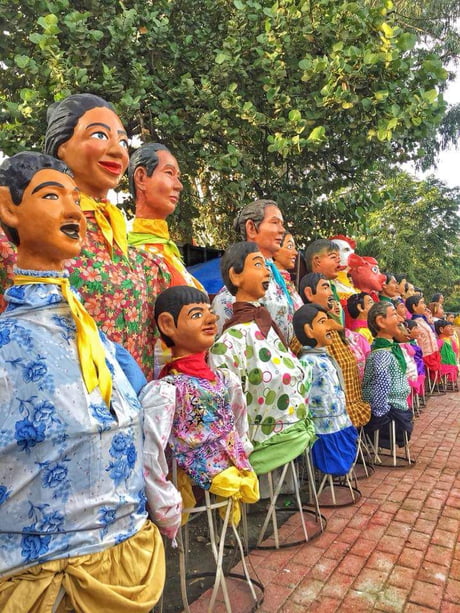
The Higantes Festival: A Festival of Giants and Fun
The Higantes Festival is an annual festival that takes place every November 22nd and 23rd in the town of Angono, Rizal, which is known as the art capital of the Philippines. The festival honors San Clemente, the patron saint of fishermen, and features a parade of giant papier-mache figures that represent various characters and themes. The festival is also a way of expressing the creativity and humor of the people of Angono, who are famous for their artistic talents and skills.
The word “Higantes” comes from the Spanish word “gigante”, which means giant. The festival dates back to the late 19th century, when Angono was a hacienda (large estate) owned by wealthy landlords who oppressed and exploited the poor farmers and fishermen. The landlords also restricted the celebration of fiestas (festivals) to only one per year, which was dedicated to San Clemente. To make the most out of this limited opportunity, the locals decided to create giant puppets that resembled their oppressors and mock them in a good-natured way. They also used the puppets as a symbol of protest and resistance against the injustices they faced.
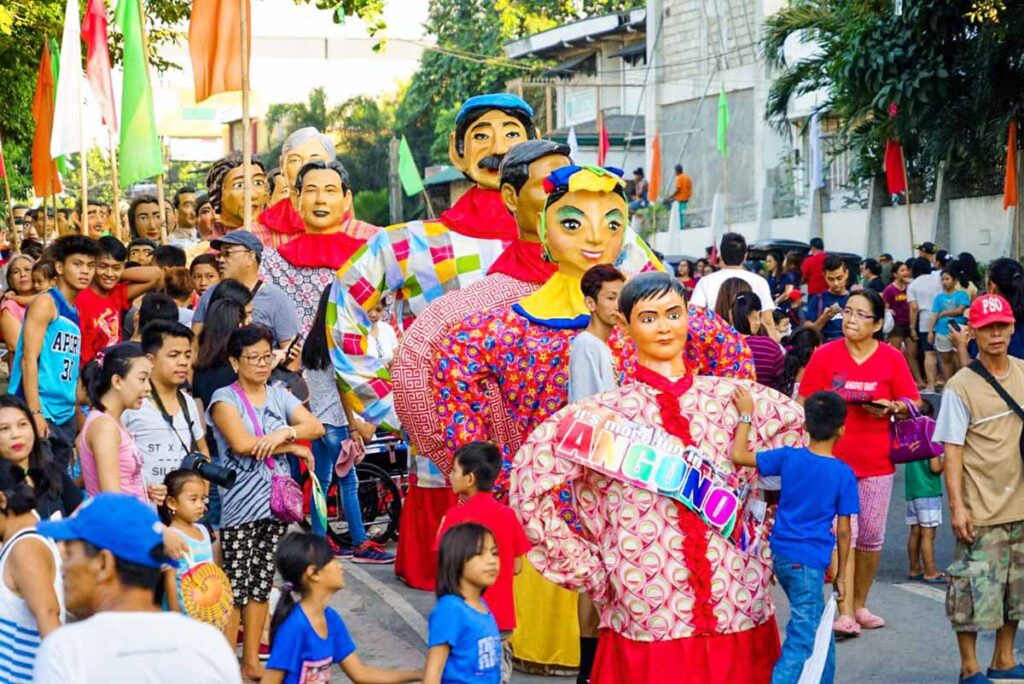
The festival was later influenced by Christianity, when Spanish missionaries introduced the devotion to Santo Niño or Holy Child Jesus to the natives. The image of Santo Niño was believed to be miraculous, as it survived a fire that burned down a wooden church where it was kept. The image was later brought to Angono by a group of devotees called Confradia del Santo Niño de Cebu, who organized a fluvial parade in Laguna Lake as part of the festival. The image was also enshrined in San Pedro Cathedral, where it is still venerated today.
The festival today is a week-long celebration that culminates on November 23rd, the feast day of San Clemente. It features various events and activities that showcase the culture and heritage of Angono, such as art exhibits, musical performances, cultural shows, food fairs, and other contests. The highlight of the festival is the grand street parade or Sadsad, where thousands of participants from different barangays or districts compete for prizes and honors. The participants wear colorful costumes and masks that are inspired by various themes, such as native culture, history, fantasy, or current events. They carry giant papier-mache figures that measure up to 12 feet tall and 5 feet wide, which are made from bamboo, wire, cloth, paper, and paint. They dance to the beat of drums and music, while chanting “Hala Bira! Pwera Pasma!” (Go on! No pain!), which expresses their enthusiasm and energy. The parade also features floats decorated with flowers, fruits, vegetables, and other local products. The parade is accompanied by a procession of the image of Santo Niño and his wife Santa Maria de la Cabeza.
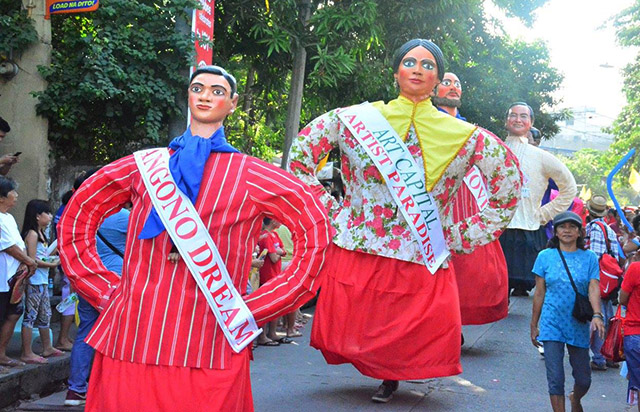
The festival is not only a feast for the eyes, but also for the taste buds. Visitors can enjoy various delicacies that are unique to Angono, such as kakanin (rice cakes), suman (sticky rice wrapped in coconut leaves), balut (boiled duck embryo), tinapa (smoked fish), tapa (dried meat), sinigang (sour soup), adobo (meat stewed in vinegar and soy sauce), and lechon (roasted pig). They can also buy souvenirs made from wood, silver, beads, or kiping (leaf-shaped wafer).
The Higantes Festival is not only a celebration of giants and fun, but also a celebration of life and faith. It is a way of preserving and promoting the traditions and values of Angono and its people. It is also a way of showcasing the beauty and diversity of Rizal and the Philippines. The festival invites everyone to join in the fun and festivity of this remarkable event.


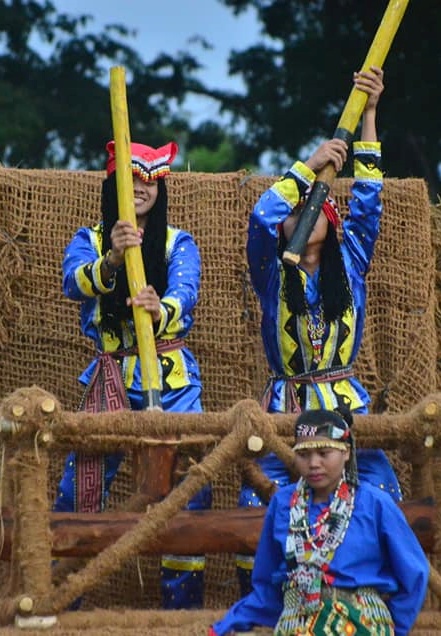
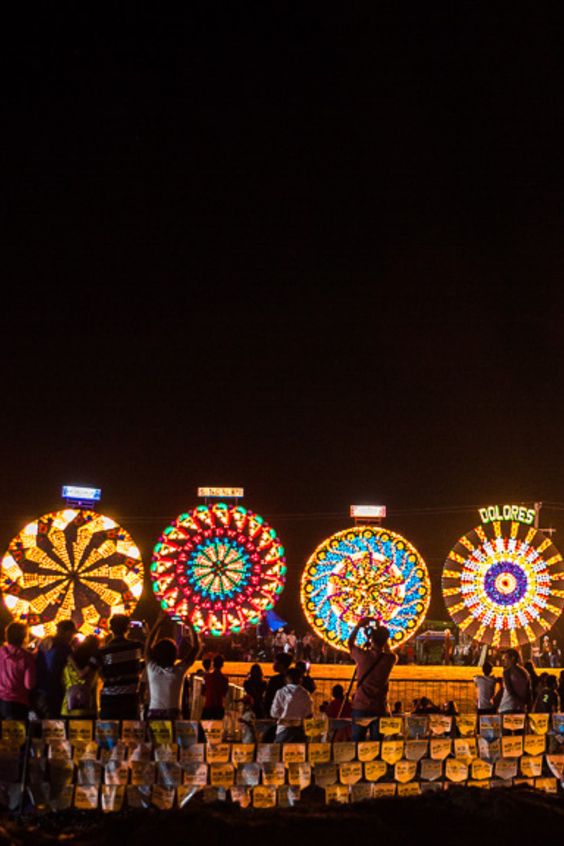

 by
by